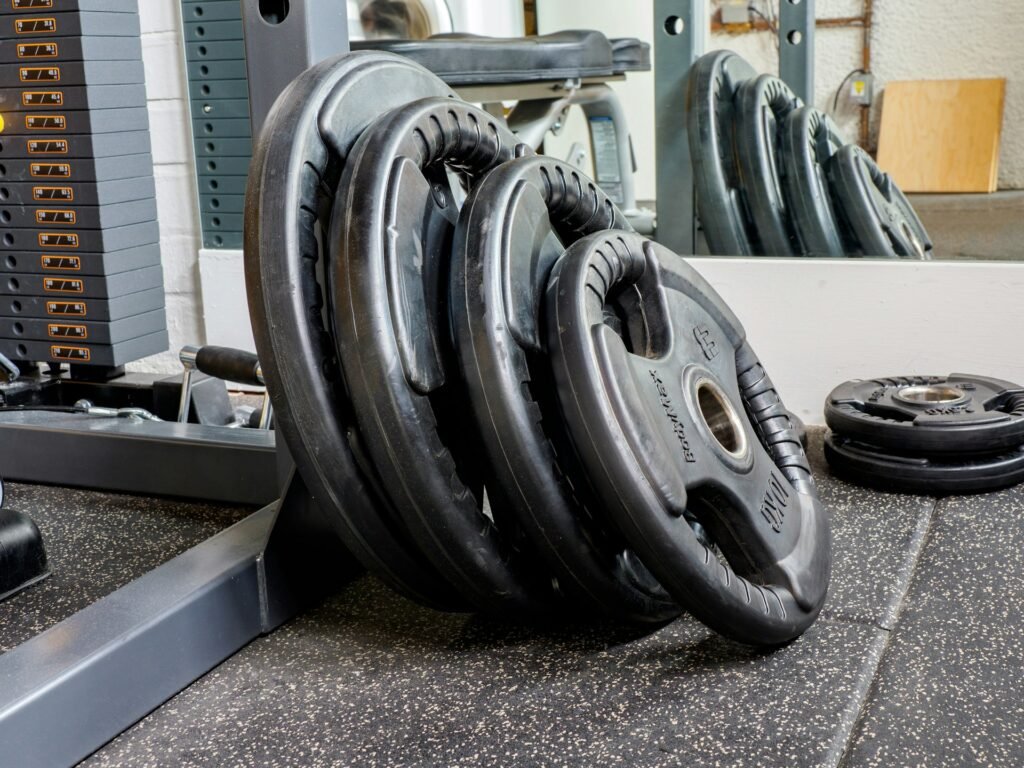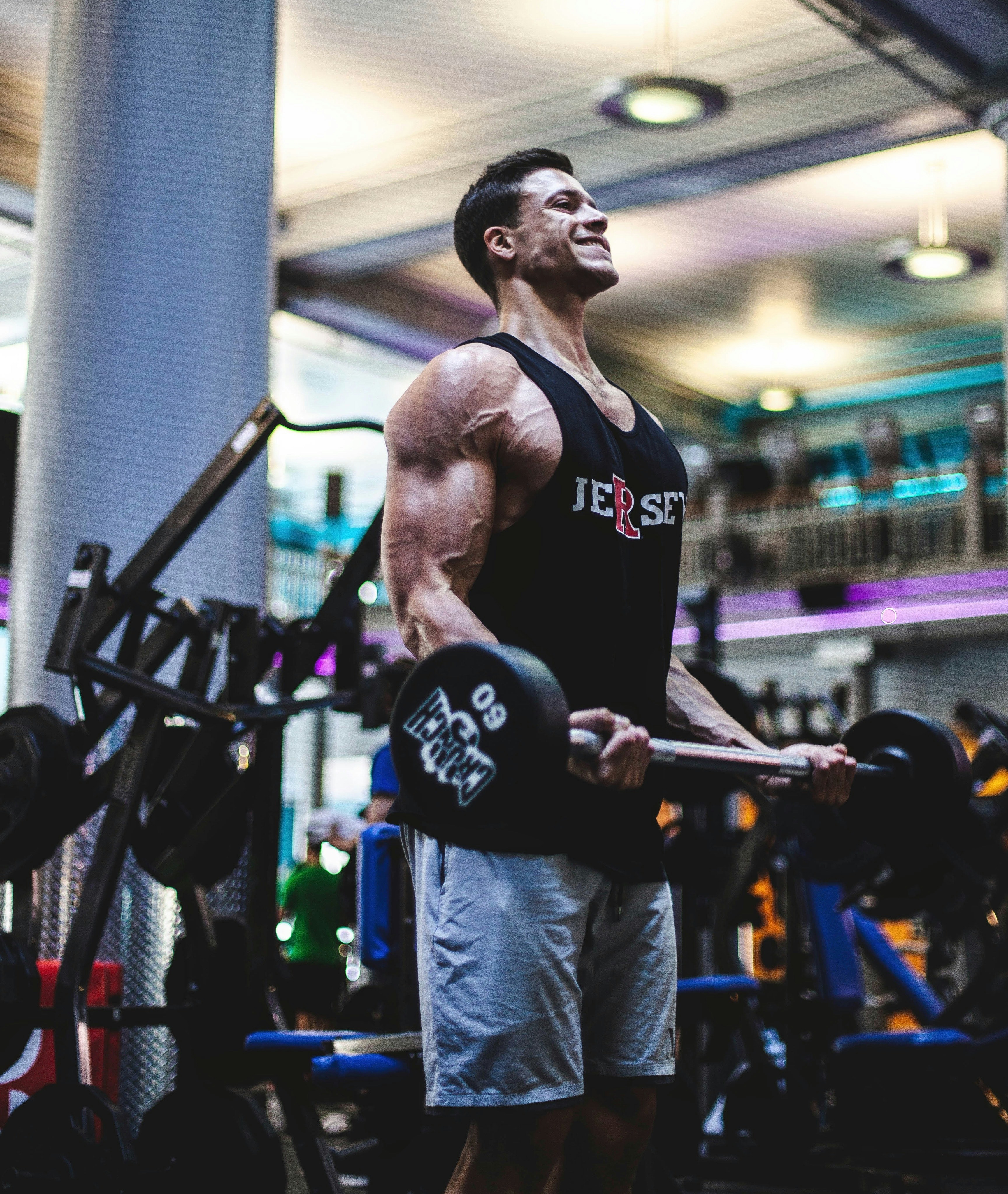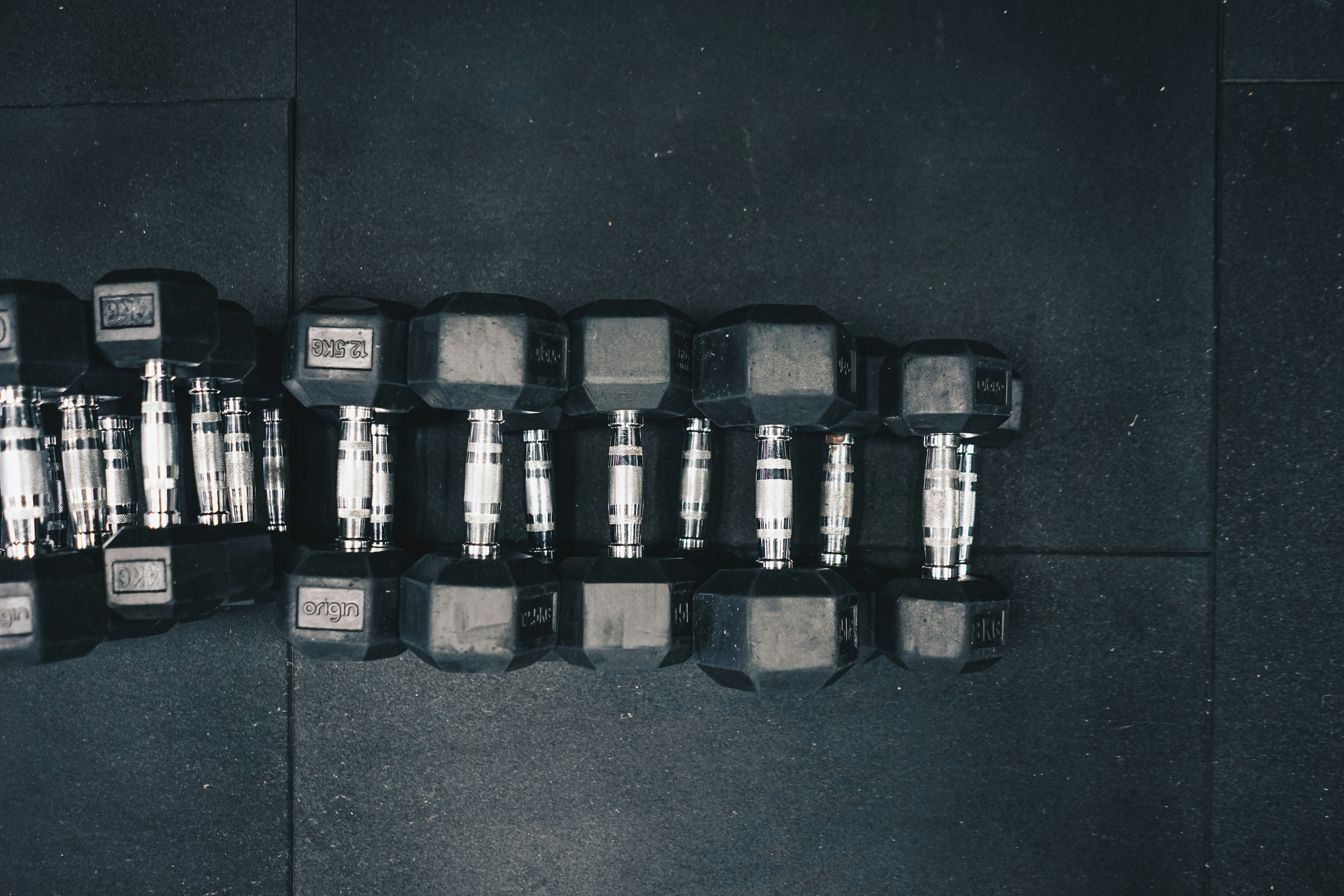
Photo by Brett Jordan on Unsplash
When discussing the differences between barbell curls and dumbbell curls, it’s important to consider several factors including muscle activation, stability, and the potential for imbalances.
Muscle Activation: Studies have shown that both exercises are effective for bicep activation. However, barbell curls might provide a slight edge in terms of overall muscle recruitment due to the ability to lift heavier weights. Data indicates that barbell curls allow individuals to engage in more compound muscle activity, involving not just the biceps, but also the forearm and shoulder muscles to a certain extent.
Stability: Dumbbell curls provide an advantage when it comes to requiring more stabilization from ancillary muscles. This can help in promoting muscle balance and reducing the risk of muscle imbalances. Due to each arm working independently, dumbbell curls can help address any asymmetry between the left and right sides of the body.
Joint Stress: When it comes to joint health, dumbbell curls have the upper hand. The independent movement of the dumbbells allows for a more natural and customizable range of motion, which can be gentler on the joints. A study found that free weights, such as dumbbells, allow lifters to find a more comfortable position that minimizes joint stress source.
In summary, both barbell and dumbbell curls have their unique benefits. The choice between them often depends on individual goals and physical needs. For more information on optimizing your strength training routine, check out our Barbell Bicep Workout.
Muscle Engagement Differences
Understanding muscle engagement differences between barbell curls and dumbbell curls can help you maximize your workouts. Both types of curls target the biceps, but they do so in distinct ways.
Barbell curls engage multiple muscle groups simultaneously. When lifting a barbell, your body naturally recruits stabilizing muscles. This includes the shoulders and core, which help maintain balance and support the weight. However, barbell curls generally ensure symmetrical muscle recruitment because both arms lift the same weight, with no room for one arm to dominate.
With dumbbell curls, each arm works independently. This causes each bicep to engage separately, allowing for more balanced muscle development. Additionally, dumbbell curls can involve a supination motion (twisting of the forearm), activating the bicep brachii more effectively. According to a study, performing curls with supination can increase bicep activation by up to 20% compared to a neutral grip.
One key factor affecting muscle engagement is muscle recruitment versus muscle activation. Muscle recruitment refers to the number of muscle fibers engaged during a lift, while muscle activation indicates how intensely these fibers are working. With repetitive use, muscle fibers can become stiff and less capable of engagement, reducing both recruitment and activation efficiency (source).
Muscle engagement is essential for effective strength training and avoiding imbalances. For a comprehensive guide on strength exercises involving both barbells and dumbbells, you might find our article on dumbbell bicep workouts at home helpful.
Understanding these differences will help you decide which curl variation suits your fitness goals better.
The Mechanics: Barbell Curl Explained

Photo by Total Shape on Unsplash
Barbell curls are a well-known exercise for building biceps and forearms. This movement is simple yet effective when performed correctly. A standard barbell curl focuses on the biceps brachii, which includes both the short head and the long head, and also engages the brachialis and brachioradialis muscles in the forearm.
To perform a barbell curl, stand with your feet shoulder-width apart and hold a barbell with an underhand grip (palms facing up) at about hip width. Keep your shoulders back, chest out, and engage your core. This posture helps isolate the biceps and ensures that the effort isn’t distributed to other muscle groups.
Lift the barbell by bending your elbows while keeping your upper arms stationary. Your elbows should slightly move forward but avoid swinging the bar or using momentum. Curl the barbell upward until your biceps are fully contracted and the bar is at shoulder level. Pause briefly at the top to maximize muscle engagement. Then, lower the barbell slowly to the starting position, taking approximately 2-3 seconds.
Studies indicate that slowing down the eccentric phase (lowering the bar) can significantly boost muscle hypertrophy. For instance, doing 6-8 reps with a slower eccentric phase showed a marked increase in muscle growth compared to a faster pace[^1^].
The barbell curl isn’t just about biceps. Proper execution also engages the forearm muscles, enhancing grip strength. This can be particularly beneficial for exercises such as deadlifts and rows. A strong grip is essential for many daily activities and overall functional fitness.
[^1^]: Here’s a reference to the article on how to perform barbell curls effectively: “How to Do Barbell Curls (Form & Muscles Worked)” Source.
The Mechanics: Dumbbell Curl Explained

Photo by Ambitious Studio* | Rick Barrett on Unsplash
The dumbbell curl is an effective exercise for isolating and building the biceps muscles. To perform a dumbbell curl, stand with your feet hip-width apart and hold a dumbbell in each hand, with your arms extended and palms facing forward. As you exhale, curl the dumbbells upwards towards your shoulders, keeping your elbows close to your sides. Lower the dumbbells back down with control, ensuring you don’t use momentum to lift the weights.
The biceps muscle, located on the front of your upper arm, contracts in two phases during the dumbbell curl. When you lift the weight, the muscle fibers shorten during the concentric phase, generating enough force to overcome the external resistance. Upon lowering the weight, the fibers lengthen in the eccentric phase, controlling the descent. According to the American Council on Exercise (ACE), this controlled motion helps maximize muscle growth and strength (source).
In addition to the biceps, smaller muscles like the brachialis and brachioradialis assist in the movement. Proper form is crucial to avoid common mistakes, such as swinging the weights or arching your lower back, which can lead to injury. Consistently practicing the dumbbell curl with good form will help you build stronger, more defined upper arms over time.
For related exercises to complement your dumbbell curls, check out our guide on dumbbell bicep workouts you can do at home.
Common Mistakes to Avoid
When performing barbell or dumbbell curls, avoiding common mistakes can help you achieve better muscle growth and reduce the risk of injury. Here are some mistakes to watch out for:
- Poor Form: One of the most common errors is using improper form. For instance, swinging your body or using momentum to lift weights reduces muscle activation and can lead to injuries. Always maintain a controlled movement.
- Incorrect Grip: Using the wrong grip can affect muscle engagement and lead to discomfort or strains. Ensure your wrists are straight and that you’re not gripping the barbell or dumbbells too tightly.
- Neglecting Full Range of Motion: Failing to extend and contract your arms fully can mean you’re not making the most out of your workouts. A University of Akron study found that a greater range of motion can increase muscle growth by up to 10% compared to partial range of motion exercises [^1^].
- Overloading: Lifting weights that are too heavy can compromise your form and increase the risk of injuries, especially in your lower back and wrists. Opt for weights that allow you to complete sets with good form.
- Ignoring Pain: Discomfort might be common during weightlifting, but sharp or persistent pain is a red flag. According to the American Council on Exercise, ignoring pain can lead to long-term injuries. Always listen to your body and seek professional advice if needed.
By being mindful of these common mistakes, you can enhance your workout efficiency and safety. If you’re interested in integrating curls effectively into your routine, check out our guide on low-impact cardio for bad knees.
[^1^]: Grammarly Blog
Integrating Curls into Your Workout Routine
Incorporating curls into your fitness regimen can add significant benefits, whether you choose barbell curls, dumbbell curls, or a mix of both.
First, consider the timing within your workout. For balanced muscle development, it’s wise to integrate curls towards the end of your upper body workout when your stabilizer muscles, like your core and shoulders, are already fatigued from heavier compound exercises. This approach ensures that these smaller muscle groups are not the primary focus but still receive adequate attention.
Statistics indicate that including isolation exercises, such as curls, can help correct muscle imbalances. A study found that approximately 22.5% of people who perform only compound exercises like bench presses and rows develop imbalances between their biceps and triceps (Quora).
Further, targeted curls can enhance functional strength and aesthetic appeal. For athletes and sports enthusiasts, strong biceps contribute to more effective arm movements in various sports ranging from basketball to swimming.
When programming curls, consider alternating between barbell and dumbbell curls weekly to exploit the unique benefits each offers. Barbell curls allow for heavier weights and potential strength gains, while dumbbell curls enable greater range of motion and muscle activation balance.
Based on your goals, integrating curls 1-2 times per week can yield significant muscle hypertrophy and strength gains. For a well-rounded routine, consider pairing your curl workouts with related articles like Dumbbell Bicep Workout at Home to maximize results with effective home-based exercises.
By thoughtfully adding curls to your regimen, you address muscle imbalances, enhance upper body strength, and achieve a more balanced physique.
Conclusion: Deciding Between Barbell and Dumbbell Curls
When it comes to building muscle, both barbell and dumbbell curls have their benefits and limitations. Deciding between the two depends largely on your individual fitness goals, experience, and any existing injuries.
Barbell curls are excellent for lifting heavier weights, which can lead to greater muscle mass over time. They allow for a more balanced lift, as both arms work together. However, they can put stress on your wrists and limits the range of motion, possibly leading to plateaus in muscle growth.
On the other hand, dumbbell curls offer a greater range of motion and help in correcting muscle imbalances since each arm works independently. They’re more versatile for incorporating variations like hammer curls or concentration curls into your routine. Dumbbells may also be safer if you have wrist or shoulder issues, as they allow for natural hand and wrist positioning.
A mix of both barbell and dumbbell curls can be beneficial. Studies have shown that combining different exercise variations can lead to more significant muscle hypertrophy source. Therefore, integrating both into your workout regimen might provide the best of both worlds.
For more tips on effective muscle-building workouts, check out our guide on dumbbell bicep workouts at home.
By understanding the unique advantages of each, you can tailor your routine to suit your needs, maximizing muscle growth and minimizing injury risk.